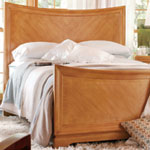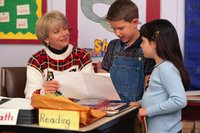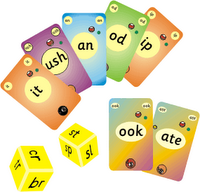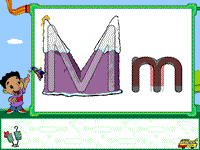In recent years the field of reading education has changed dramatically and many reading instructors have divided between phonic instruction and whole language. Various reading programs that fall into one of the two camps have spent millions advertising the relative merits of both.
The simple truth of the matter is that the best reading instruction takes place using a combination of both strategies. And increasingly reading research has demonstrated that phonemic awareness, not simply phonics, is critically important to ensuring reading success–especially for students with learning disabilities.
However what makes this so confusing for many parents and caregivers is that the term “phonemic awareness” is tossed around so often and in so many different ways. Phonemic awareness concerns the structure of words rather than their meaning. To understand the construction of our written code, words, readers need to be able to reflect upon the spelling-to-sound correspondences. To understand that the written word, beginning readers must first have some understanding that words are composed of sounds (phonemic awareness) rather than their conceiving of each word as a single indivisible sound stream.
The development of this awareness cannot be accomplished in one simple step but rather over time. It is also important to note that these skills are actually pre-reading skills. Children do not necessarily recognize any of these elements on the page but rather by ear.

The stages of phonological development toward the end goal of deep phonemic awareness can include:
Recognition that sentences are made up of words.
Recognition that words can rhyme & the ability to make rhymes
Recognition that words can be broken down into syllables & the ability to do so
Recognition that words can be broken down into onsets and rimes & the ability to do so
Recognition that words can begin with the same sound & the ability to make these matches
Recognition that words can end with the same sound & the ability to make these matches
Recognition that words can have the same medial sound(s) & the ability to make these matches
Recognition that words can be broken down into individual phonemes & the ability to do so
Recognition that sounds can be deleted from words to make new words & the ability to do so
Ability to blend sounds to make words
Ability to segment words into constituent sounds
Phonemic awareness is more complex however than simple auditory discrimination, which is the ability to understand that cat and mat are different words. To be able to describe how they are similar and how they are different demonstrates a level of phonemic awareness. Young children are not normally asked to consider words at a level other than their meaning, although experience with rhymes may be the first indication for children that they can play with the structure of words.
Learning to recognize and play with rhyme is often the beginning of phonemic awareness development for many children. To be aware that words can have a similar end-sound implies a critical step in learning to read. Sensitivity to rhyme makes both a direct and indirect contribution to reading.
Directly, it helps children appreciate that words that share common sounds usually also share common letter sequences. Later exposure to common letter sequences then makes a significant contribution to reading strategy development.
Indirectly, the recognition of rhyme promotes the refining of word analysis from larger intra-word segments (such as rhyme) to analysis at the level of the phoneme (the critical requirement for reading).
Studies show a very strong relationship between rhyming ability at age three and performance at reading and spelling three years later. A number of studies have reinforced the value of such early exposure to rhyming games.
Rhyming and phoneme awareness are related. Studies have shown that children who are capable of good discrimination of musical pitch also score high on tests of phonemic awareness. Since pitch change is an important source of information in the speech signal, it may be that sensitivity to small frequency changes, such as is involved in phoneme recognition, is an important aspect of successful initial reading. Such results raise the interesting possibility that musical training may represent one of those pre-reading, home-based experiences that contribute to the marked individual differences in phonemic awareness with which children start school.
So, what do you teach? Techniques that target phoneme awareness most frequently involve direct instruction in segmenting words into component sounds, identifying sounds in various positions in words (initial, medial, final), identifying words that begin or end with the same sound, and manipulating sounds in a word such as saying a word without its beginning or end sound.
Most of the phoneme awareness activities should not take more than 15 or 20 minutes to complete. Although a particular activity can be selected well in advance, the specific words targeted for phoneme awareness should be selected from material familiar to your child — such as a book you recently read together or a game or a family outing. Phoneme awareness activities are a natural extension of the shared reading activities.
A natural and spontaneous way of providing children with exposure to phonemes is to focus on literature that deals playfully with speech sounds through rhymes. Simple rhyme patterns are easily recalled after repeated exposure, and children will get the idea of creating new rhymes. In “There’s a Wocket in My Pocket” (Seuss, 1974), initial sounds of everyday objects are substituted as a child talks about the strange creatures around the house, such as the “zamp in the lamp.” Children can make up their own strange creatures in the classroom such as the “zuk in my book.”
Alliteration is the repetition of an initial consonant sound across several words, such as presented in the alphabet book “Faint Frogs Feeling Feverish” and “Other Terrifically Tantalizing Tongue Twisters”.
Assonance, the repetition of vowel sounds within words, is often combined with rhyme, as in “It rains and hails and shakes the sails” from “Sheep on a Ship” or in humorous ways such as “The tooter tries to tutor two tooters to toot” in “Moses Supposes His Toeses Are Roses”. Some books include music to go with the rhymes, such as “Down by the Bay”, in which two children try to outdo one another in making up questions that rhyme, such as “Did you ever see a goose kissing a moose?”
Spend some time in the children’s section of your library or browse through your child’s book shelves at home to look for books that deal playfully with language. Read and reread the stories and comment on the language use then encourage predictions of sound, word, and sentence patterns (for example, “What sound do you hear at the beginning of all those words?”) and invent new versions of the language patterns utilized in the stories.
Research has demonstrated not only a predictive relationship between phoneme awareness and reading success, but also a causal relationship. Phoneme awareness that has a positive impact on reading can be developed in children through systematic instruction. Early training in phoneme awareness should be a priority for those interested in improving early reading instruction and in reducing reading failure.

Some other activites include:
Making Word Families Charts: Charts can contain words from one story or a brainstormed list from the children. The children can dictate the words to be placed on a word family chart. As they begin to develop letter/sound knowledge, they can copy or write the words themselves. You can use magnetic letters to “create” words for a word family chart. Provide a rime of plastic letters (e.g., at) and have the children take turns placing different letters in the onset position to create new words (e.g., hat, bat, sat, rat). These charts can be used as reference charts (or the children can make their own word families reference book) for spelling and creative writing activities.
Odd Word Out: Four words, three of which rhyme, are presented (e.g., zveed, bead, pill, seed ). The child determines which word is the odd one that doesn’t belong with the others. The game of concentration or memory is a good practice activity for rhyme recognition.
Alliteration: Sound personalities can be introduced naturally and in context by selecting a particular sound to talk about that is stressed in alphabet or other books that use alliteration. For example, presenting “smiling snakes sipping strawberry sodas” for the alphabet letter S. It is helpful to create or provide pictures that represent these sound personalities and to post them as each is introduced. A natural connection can sometimes be made between the sound and the letter, such as presenting a picture of “Sammy snake” drawn in the shape of the letter S or “Buzzy bee” flying in a pattern of the letter Z. Besides providing a label to facilitate talking about sounds, the pictures provide self-correcting cues for children engaged in initialsound isolation and sound-to-word matching activities.
Counting: To count syllables in words, activities can be used such as clapping hands, tapping the desk, or marching in place to the syllables in children’s names (Ma- ry), items in the immediate environment (win- dow), or words from a favorite story (wi-shy, wa-shy). Initially, two- syllable words can be targeted, building up to three.
Sound Synthesis: Sound synthesis can be done using the following sequence: blending an initial sound onto the remainder of a word, followed by blending syllables of a word together, and then blending isolated phonemes into a word. Model this by blending an initial sound onto a word by using the jingle “It starts with /n/ and it ends with ight, put it together, and it says night.” When they have the idea, the children supply the final word. An element of excitement can be created by using children’s names for this activity and asking each child to recognize and say his or her own name when it is presented- “It starts with /m/ and it ends with ary, put it together and it says ———.” Context can be provided by limiting the words to objects that can be seen in the room or to words from a particular story the children just read. As the children become proficient, they can take turns using the jingle to present their own words to be blended.
Sound-to-Word Matching: Requires that the child identify the beginning sound of a word. Awareness of the initial sound in a word can be done by showing the children a picture (dog) and asking the children to identify the correct word out of three: “Is this a /mmm/-og, a /d/d/d/-og, or a /sss/-og?” A variation is to ask if the word has a particular sound: “Is there a /d/ in dog?” This can then be switched to “Which sound does dog start with-/d/, /sh/, or /1/?” This sequence encourages the children to try out the three onsets with the rime to see which one is correct. It is easiest to use continuants that can be exaggerated and prolonged to heighten the sound input. Iteration should be used with stop consonants to add emphasis.





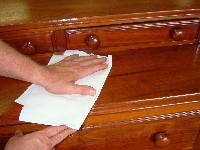
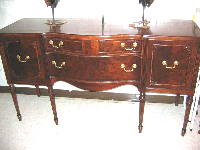


 I think that the furniture outlet shop is an ideal place to find slightly damaged new furniture, because these items are priced so low.
I think that the furniture outlet shop is an ideal place to find slightly damaged new furniture, because these items are priced so low.


 I think that Bombay furniture are applied to a rather extensive class of furniture pieces originally manufactured in the city of Bombay.
I think that Bombay furniture are applied to a rather extensive class of furniture pieces originally manufactured in the city of Bombay.

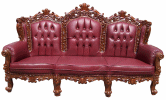
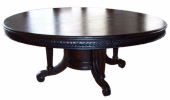



 When selecting dining sets for a restaurant, you have several options to help you match your environment. Tables are available in stainless steel with different surfaces, such as smooth or a non-glare hologram effect, or teak. Round, square or rectangular tables range from 24" wide to 42". And there are several bar height tables too. Table bases are constructed of anodized tubular aluminum and are totally water resistant.
When selecting dining sets for a restaurant, you have several options to help you match your environment. Tables are available in stainless steel with different surfaces, such as smooth or a non-glare hologram effect, or teak. Round, square or rectangular tables range from 24" wide to 42". And there are several bar height tables too. Table bases are constructed of anodized tubular aluminum and are totally water resistant.



 materials including wood and metal, we also carry pieces that come in several different styles and types including those which would fit in well at a pub. Tables and bar stools that have that pub look are extremely popular, especially amongst people who want to incorporate a fun and eclectic decorative scheme into their homes. These pieces are great for game and entertainment rooms, and even work well as an alternative dining set in the kitchen or dining room. You often have the opportunity to acquire a bar pub table that is separate from the pub table bar stools or you can also often be purchased as a set. Either way their durable and stylish construction makes these pieces a welcome addition to just about any environment.
materials including wood and metal, we also carry pieces that come in several different styles and types including those which would fit in well at a pub. Tables and bar stools that have that pub look are extremely popular, especially amongst people who want to incorporate a fun and eclectic decorative scheme into their homes. These pieces are great for game and entertainment rooms, and even work well as an alternative dining set in the kitchen or dining room. You often have the opportunity to acquire a bar pub table that is separate from the pub table bar stools or you can also often be purchased as a set. Either way their durable and stylish construction makes these pieces a welcome addition to just about any environment.
